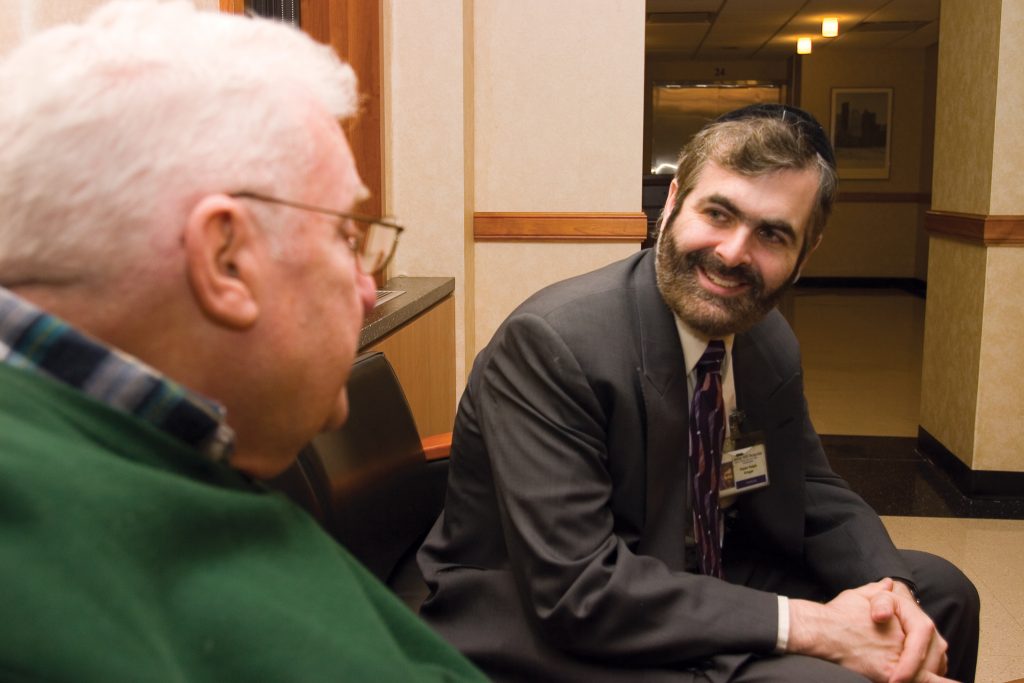18.2: Basic Concepts
- Page ID
- 52527
\( \newcommand{\vecs}[1]{\overset { \scriptstyle \rightharpoonup} {\mathbf{#1}} } \)
\( \newcommand{\vecd}[1]{\overset{-\!-\!\rightharpoonup}{\vphantom{a}\smash {#1}}} \)
\( \newcommand{\dsum}{\displaystyle\sum\limits} \)
\( \newcommand{\dint}{\displaystyle\int\limits} \)
\( \newcommand{\dlim}{\displaystyle\lim\limits} \)
\( \newcommand{\id}{\mathrm{id}}\) \( \newcommand{\Span}{\mathrm{span}}\)
( \newcommand{\kernel}{\mathrm{null}\,}\) \( \newcommand{\range}{\mathrm{range}\,}\)
\( \newcommand{\RealPart}{\mathrm{Re}}\) \( \newcommand{\ImaginaryPart}{\mathrm{Im}}\)
\( \newcommand{\Argument}{\mathrm{Arg}}\) \( \newcommand{\norm}[1]{\| #1 \|}\)
\( \newcommand{\inner}[2]{\langle #1, #2 \rangle}\)
\( \newcommand{\Span}{\mathrm{span}}\)
\( \newcommand{\id}{\mathrm{id}}\)
\( \newcommand{\Span}{\mathrm{span}}\)
\( \newcommand{\kernel}{\mathrm{null}\,}\)
\( \newcommand{\range}{\mathrm{range}\,}\)
\( \newcommand{\RealPart}{\mathrm{Re}}\)
\( \newcommand{\ImaginaryPart}{\mathrm{Im}}\)
\( \newcommand{\Argument}{\mathrm{Arg}}\)
\( \newcommand{\norm}[1]{\| #1 \|}\)
\( \newcommand{\inner}[2]{\langle #1, #2 \rangle}\)
\( \newcommand{\Span}{\mathrm{span}}\) \( \newcommand{\AA}{\unicode[.8,0]{x212B}}\)
\( \newcommand{\vectorA}[1]{\vec{#1}} % arrow\)
\( \newcommand{\vectorAt}[1]{\vec{\text{#1}}} % arrow\)
\( \newcommand{\vectorB}[1]{\overset { \scriptstyle \rightharpoonup} {\mathbf{#1}} } \)
\( \newcommand{\vectorC}[1]{\textbf{#1}} \)
\( \newcommand{\vectorD}[1]{\overrightarrow{#1}} \)
\( \newcommand{\vectorDt}[1]{\overrightarrow{\text{#1}}} \)
\( \newcommand{\vectE}[1]{\overset{-\!-\!\rightharpoonup}{\vphantom{a}\smash{\mathbf {#1}}}} \)
\( \newcommand{\vecs}[1]{\overset { \scriptstyle \rightharpoonup} {\mathbf{#1}} } \)
\(\newcommand{\longvect}{\overrightarrow}\)
\( \newcommand{\vecd}[1]{\overset{-\!-\!\rightharpoonup}{\vphantom{a}\smash {#1}}} \)
\(\newcommand{\avec}{\mathbf a}\) \(\newcommand{\bvec}{\mathbf b}\) \(\newcommand{\cvec}{\mathbf c}\) \(\newcommand{\dvec}{\mathbf d}\) \(\newcommand{\dtil}{\widetilde{\mathbf d}}\) \(\newcommand{\evec}{\mathbf e}\) \(\newcommand{\fvec}{\mathbf f}\) \(\newcommand{\nvec}{\mathbf n}\) \(\newcommand{\pvec}{\mathbf p}\) \(\newcommand{\qvec}{\mathbf q}\) \(\newcommand{\svec}{\mathbf s}\) \(\newcommand{\tvec}{\mathbf t}\) \(\newcommand{\uvec}{\mathbf u}\) \(\newcommand{\vvec}{\mathbf v}\) \(\newcommand{\wvec}{\mathbf w}\) \(\newcommand{\xvec}{\mathbf x}\) \(\newcommand{\yvec}{\mathbf y}\) \(\newcommand{\zvec}{\mathbf z}\) \(\newcommand{\rvec}{\mathbf r}\) \(\newcommand{\mvec}{\mathbf m}\) \(\newcommand{\zerovec}{\mathbf 0}\) \(\newcommand{\onevec}{\mathbf 1}\) \(\newcommand{\real}{\mathbb R}\) \(\newcommand{\twovec}[2]{\left[\begin{array}{r}#1 \\ #2 \end{array}\right]}\) \(\newcommand{\ctwovec}[2]{\left[\begin{array}{c}#1 \\ #2 \end{array}\right]}\) \(\newcommand{\threevec}[3]{\left[\begin{array}{r}#1 \\ #2 \\ #3 \end{array}\right]}\) \(\newcommand{\cthreevec}[3]{\left[\begin{array}{c}#1 \\ #2 \\ #3 \end{array}\right]}\) \(\newcommand{\fourvec}[4]{\left[\begin{array}{r}#1 \\ #2 \\ #3 \\ #4 \end{array}\right]}\) \(\newcommand{\cfourvec}[4]{\left[\begin{array}{c}#1 \\ #2 \\ #3 \\ #4 \end{array}\right]}\) \(\newcommand{\fivevec}[5]{\left[\begin{array}{r}#1 \\ #2 \\ #3 \\ #4 \\ #5 \\ \end{array}\right]}\) \(\newcommand{\cfivevec}[5]{\left[\begin{array}{c}#1 \\ #2 \\ #3 \\ #4 \\ #5 \\ \end{array}\right]}\) \(\newcommand{\mattwo}[4]{\left[\begin{array}{rr}#1 \amp #2 \\ #3 \amp #4 \\ \end{array}\right]}\) \(\newcommand{\laspan}[1]{\text{Span}\{#1\}}\) \(\newcommand{\bcal}{\cal B}\) \(\newcommand{\ccal}{\cal C}\) \(\newcommand{\scal}{\cal S}\) \(\newcommand{\wcal}{\cal W}\) \(\newcommand{\ecal}{\cal E}\) \(\newcommand{\coords}[2]{\left\{#1\right\}_{#2}}\) \(\newcommand{\gray}[1]{\color{gray}{#1}}\) \(\newcommand{\lgray}[1]{\color{lightgray}{#1}}\) \(\newcommand{\rank}{\operatorname{rank}}\) \(\newcommand{\row}{\text{Row}}\) \(\newcommand{\col}{\text{Col}}\) \(\renewcommand{\row}{\text{Row}}\) \(\newcommand{\nul}{\text{Nul}}\) \(\newcommand{\var}{\text{Var}}\) \(\newcommand{\corr}{\text{corr}}\) \(\newcommand{\len}[1]{\left|#1\right|}\) \(\newcommand{\bbar}{\overline{\bvec}}\) \(\newcommand{\bhat}{\widehat{\bvec}}\) \(\newcommand{\bperp}{\bvec^\perp}\) \(\newcommand{\xhat}{\widehat{\xvec}}\) \(\newcommand{\vhat}{\widehat{\vvec}}\) \(\newcommand{\uhat}{\widehat{\uvec}}\) \(\newcommand{\what}{\widehat{\wvec}}\) \(\newcommand{\Sighat}{\widehat{\Sigma}}\) \(\newcommand{\lt}{<}\) \(\newcommand{\gt}{>}\) \(\newcommand{\amp}{&}\) \(\definecolor{fillinmathshade}{gray}{0.9}\)Spiritual Distress
When patients are initially diagnosed with an illness or experience a serious injury, they often grapple with the existential question, “Why is this happening to me?” This question is often a sign of spiritual distress. Spiritual distress is defined by NANDA-I as, “A state of suffering related to the inability to experience meaning in life through connections with self, others, the world, or a superior being.”[1] Nurses can help relieve this suffering by therapeutically responding to patients’ signs of spiritual distress and advocating for their spiritual needs throughout their health care experience.
Spirituality
Provision 1 of the ANA Code of Ethics states, “The nurse practices with compassion and respect for the inherent dignity, worth, and unique attributes of every person” and “optimal nursing care enables the patient to live with as much physical, emotional, social, and religious or spiritual well-being as possible and reflects the patient’s own values.”[2]
Spiritual well-being is a pattern of experiencing and integrating meaning and purpose in life through connectedness with self, others, art, music, literature, nature, and/or a power greater than oneself.[3] Spirituality is defined by the Interprofessional Spiritual Care Education Curriculum (ISPEC) as, “A dynamic and intrinsic aspect of humanity through which persons seek ultimate meaning, purpose, and transcendence and experience relationship to self, family, others, community, society, nature, and the significant or sacred.”[4] Spiritual needs and spirituality are often mistakenly equated with religion, but spirituality is a broader concept. Elements of spirituality include faith, meaning, love, belonging, forgiveness, and connectedness.[5] Spirituality and spiritual values in the context of nursing are closely intertwined with the concept of caring.[6] See Figure 18.1[7] for an illustration of spirituality.

An integrative review of nursing research and resources was completed in 2014 to describe the impact of spirituality and spiritual support in nursing.[8] See the following box for discussion of findings from this integrative review.
An integrative review of nursing literature selected 26 articles published between 1999 and 2013 to describe the experiences of spirituality and the positive impact of spiritual support in nursing literature.[10] Spirituality was described as the integration of body, mind, and spirit into a harmonious whole (often referred to as holistic care). Spirituality was associated with the development of inner strength, looking into one’s own soul, believing there is more to life than worldly affairs, and trying to understand who we are and why we are on this earth.
Transcendence was described as an understanding of being part of a greater picture or of something greater than oneself, such as the awe one can experience when walking in nature. It was also expressed as a search for the sacred through subjective feelings, thoughts, and behaviors. Spirituality was found to have a positive effect on patients’ health and promoted recovery by viewing life from different perspectives and looking beyond one’s own anxiety to develop an understanding of illness and change.
Relationships and connectedness were also found to be powerful spiritual interventions that contributed to an individual’s spirituality. This included embracing, crying together, gift giving, having coffee together, and visiting each other. Laughter, happy thoughts, and the smiles of others were considered comforting. Being with others was described as a primary spiritual need, and conversation was unnecessary. Spirituality brought about the realization that the relationship with family and friends is important and involves finding a healthy balance in relationships among friends, family, society, and a higher power. Presence was the most influential element in positively influencing recovery. The presence of family and friends was a calming experience that brought forth comfort, peace, happiness, joy, acceptance, and hope.
Nurses facilitate their patients’ search for meaning by enabling them to express personal beliefs, as well as by supporting them in taking part in their religious and cultural practices. Furthermore, nurses assess and meet their patients’ spiritual needs by using active listening when talking, asking questions, and picking up patient cues. Active listening requires nurses to be fully present, especially when patients appear depressed or upset.
Nurses were found to use their own spirituality when helping patients achieve spiritual well-being. A desire to help others in need is an important part of spirituality, which is also described as discovering meaning and purpose in life and offering the gift of self to others. Helping others also brings a sense of self-worth, personal fulfilment, and satisfaction.
Spiritual Assessment
The Joint Commission requires that health care organizations provide a spiritual assessment when patients are admitted to a hospital. Spiritual assessment can include questions such as the following:
- Who or what provides you with strength or hope?
- How do you express your spirituality?
- What spiritual needs can we advocate for you during this health care experience?
In addition to performing a routine spiritual assessment on admission, nurses often notice other cues related to a patient’s spiritual distress or desire to enhance their spiritual well-being. When these cues are identified, spiritual care should be provided to relieve suffering and promote spiritual health. There are several nursing interventions that can be implemented, in addition to contacting the health care agency’s chaplain or the patient’s clergy member. See the “Applying the Nursing Process” section for a discussion of spiritual assessment tools and nursing interventions related to spiritual care.
Many hospitals, nursing homes, assisted living facilities, and hospices employ professionally trained chaplains to assist with the spiritual, religious, and emotional needs of patients, family members, and staff. In these settings, chaplains support and encourage people of all religious faiths and cultures and customize their approach to each individual’s background, age, and medical condition. Chaplains can meet with any individual regardless of their belief, or lack of belief, in a higher power and can be very helpful in reducing anxiety and distress. A nurse can make a referral for a chaplain without a provider order. See Figure 18.2[11] for an image of a hospital chaplain offering support to a patient.

A chaplain assists patients and their family members to develop a spiritual view of their serious illness, injury, or death, which promotes coping and healing. A spiritual view of life and death includes elements such as the following:
-
- Suffering occurs at physical, mental, emotional, and spiritual levels. Sociocultural factors, religious beliefs, family values and dynamics, and other environmental factors affect a person’s response to suffering.
- Hope is a desire or goal for a particular event or outcome. For example, some people may view dying as “hopeless” whereas a spiritual view can define hope as a “good death” when the patient dies peacefully according to the end-of-life preferences they previously expressed. Read more about the concept of a “good death” in the “Grief and Loss” chapter.
- Mystery is knowing there is truth beyond understanding and explanation.
- Peacemaking is the creation of a space for nurturing and healing.
- Forgiveness is an internal process releasing intense emotions attached to past incidents. Self-forgiveness is essential to spiritual growth and healing.
- Prayer is an expression of one’s spirituality through a personalized interaction or organized form of petitioning and worship.
- Herdman, T. H. & Kamitsuru, S. (Eds.). (2018). Nursing diagnoses: Definitions and classification, 2018-2020. Thieme Publishers New York, pp. 365, 372-377. ↵
- American Nurses Association. (2015). Code of ethics for nurses with interpretive statements. American Nurses Association. https://www.nursingworld.org/practice-policy/nursing-excellence/ethics/code-of-ethics-for-nurses/coe-view-only/↵
- Herdman, T. H. & Kamitsuru, S. (Eds.). (2018). Nursing diagnoses: Definitions and classification, 2018-2020. Thieme Publishers New York, pp. 365, 372-377. ↵
- Puchalski, C. M., Vitillo, R., Hull, S. K., & Reller, N. (2014). Improving the spiritual dimension of whole person care: Reaching national and international consensus. Journal of Palliative Medicine, 17(6), 642–656. https://doi.org/10.1089/jpm.2014.9427↵
- Rudolfsson, G., Berggren, I., & da Silva, A. B. (2014). Experiences of spirituality and spiritual values in the context of nursing - An integrative review. The Open Nursing Journal, 8, 64–70. https://dx.doi.org/10.2174%2F1874434601408010064↵
- Rudolfsson, G., Berggren, I., & da Silva, A. B. (2014). Experiences of spirituality and spiritual values in the context of nursing - An integrative review. The Open Nursing Journal, 8, 64–70. https://doi.org/10.2174/1874434601408010064↵
- "960_720.jpg” by Activedia is licensed under CC0↵
- Rudolfsson, G., Berggren, I., & da Silva, A. B. (2014). Experiences of spirituality and spiritual values in the context of nursing - An integrative review. The Open Nursing Journal, 8, 64–70. https://dx.doi.org/10.2174%2F1874434601408010064↵
- Rudolfsson, G., Berggren, I., & da Silva, A. B. (2014). Experiences of spirituality and spiritual values in the context of nursing - An integrative review. The Open Nursing Journal, 8, 64–70. https://dx.doi.org/10.2174%2F1874434601408010064↵
- Rudolfsson, G., Berggren, I., & da Silva, A. B. (2014). Experiences of spirituality and spiritual values in the context of nursing - An integrative review. The Open Nursing Journal, 8, 64–70. https://doi.org/10.2174/1874434601408010064↵
- "Pastoral_Care.jpg" by WikiDavidUser is licensed under CC BY-SA 3.0↵
- Religion & Ethics NewsWeekly. (2016, September 16). Spiritual healthcare. [Video]. YouTube. All rights reserved. https://youtu.be/97d1JMKTuk4↵
- Northwell Health. (2015, December 14). A Day in the life of a chaplain. [Video]. YouTube. All rights reserved. https://youtu.be/0mERMJikQkg↵
- Harvard T. H. Chan School of Public Health. (2017, August 29). Focus on the spiritual health can benefit patients--and doctors. [Video]. YouTube. https://youtu.be/mDfkhILODtE↵
- Intermountain Healthcare. (2017, February 21). Chaplains and the role of spiritual care in healthcare. [Video]. YouTube. All rights reserved. https://youtu.be/l6n6chrQX0A↵


